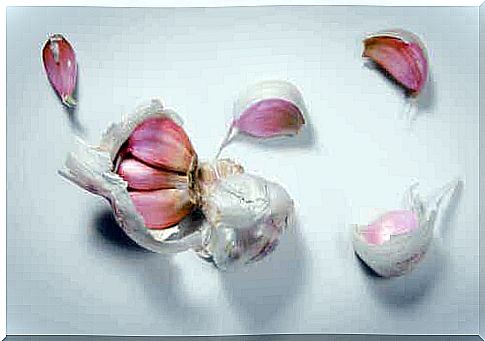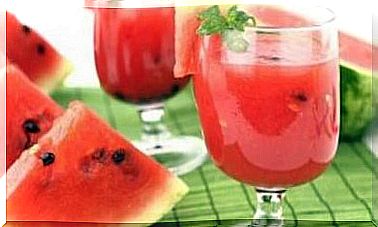Difference Between Tubers, Tuber Roots And Bulbs

Today’s article explains the difference between tubers, tuber roots and bulbs.
You’ve probably eaten potatoes, onions, beets, carrots and sweet potatoes at some point in your life and you already know they all grow underground. However, are you aware of the many other vegetables that grow in this way? Do you know that they are full of nutrients that are good for your health?
Tubers, tuberous roots and bulbs grow underground and are the main raw material for many rations of food. However, there are several differences in their structure and cultivation. First, they are all bulbous plants.
The biggest difference between them is how the underground part develops to collect nutrients. It can be a stem in the case of tubers and onions, or a root that is in the tubers.
In addition, tubers, tuber roots and bulbs usually have different shapes. The bulbs are rounder, the roots of the tubers are elongated and the tubers are not uniform in shape. They’re pretty similar, so people often confuse them with each other.
Tubers
Tubers are the thick stems of plants and their function is to collect nutrients, water and energy for the plants. An article published by the Mayor de San Andrés University of Bolivia says that the “place to tame” the tubers was in the Central Andes.
This is probably the reason for their popularity in Peru, Bolivia, Ecuador and Colombia. Nevertheless, many tubers have now spread around the world. Potatoes as an example.
Underground vegetables are usually rich in complex carbohydrates, water, and fiber. They do not contain cholesterol and need to be cooked in order for the digestive system to handle them properly.
Likewise, they are rich in minerals such as potassium, iron, vitamin A and vitamin C. Their main advantage is the versatility, which allows them to be used in all kinds of foods, whether cooked, crushed, fried, roasted and even flour.
Examples of tubers in the garden and kitchen
Tubers are highly nutritious ingredients that are an important part of a balanced diet. In addition, they are usually cheap and easy to find. There is a large selection of them, although most of them are unknown to ordinary consumers, such as Oxalis tuberosa and Ullucus tuberous.
- Potatoes are popular worldwide. According to the International Potato Center, there are more than 4,000 varieties of potatoes with different shades, sizes and flavors. It is a fairly versatile ingredient and great in many recipes. In addition, it can be grown under a number of different conditions.
- Turnip is a slightly apple-like tuber. It is popular in Europe and the leaves are also edible. In addition, it is rich in potassium, fiber and vitamin C.
- Radish is a vegetable of the cruciferous family and comes from China, but adapts well to different climates and is also cold-resistant. It ripens quickly and is easy to grow in a home garden. In addition, it has medicinal properties.

Tuber roots
These are the thick roots that form the body for storing plant nutrients.
They are usually native to the tropics. However, they are now popular all over the world because of their delicious taste and easy cultivation.
Examples of tuber roots in the garden and kitchen
Tuber roots are the most common underground vegetable. They grow among thinner roots, which helps the plant get water and nutrients.
In addition, they can survive for a long time underground, even if the above-ground part of the plant deteriorates.
The most common tuber roots:
- Cassava is an important source of carbohydrates for many people, especially in Africa, America and Asia. It is originally from a tropical climate. In addition, its shell is brown and the inside is white because it contains a lot of starch.
- Jamssi is the second most popular after cassava. It is eaten a lot in Asian, African and South American countries. It usually grows in tropical areas and has a brown bark. It is made into a white mass and is rich in starch. It can be stored for up to six months.
- Carrots are popular vegetables that fall into the beta-carotene-containing tuber root classification – good for vision and skin health. The most common are Oranges, but there are also purple, red and yellow varieties of carrots. In addition, they are easy to grow in home gardens and harvest takes about three months.
- Sweet potatoes are native to South America. There are different varieties that vary in color between white, orange, red, purple and yellow. Their taste is a little sweet. They have a high content of vitamin C, starch, vitamin A and potassium, so they have good nutritional properties. You can also eat their sprouts.
- Arracacha, also known as Creole celery or white carrot, is a sweet-tasting root. It is white or yellow and contains starch. It is also popular in South America and is very nutritious due to its high energy content. Therefore, nutritionists do not recommend it for the overweight.
- Beets are very nutritious and popular. They are available in different colors, but the best known is the intense red color. Their taste is earthy and sweet due to the high sugar content. In fact, the sugar industry uses them to make this substance.
Onions
An onion is a thick stem of a plant that grows underground and acts as a nutrient storage organ.
They are usually round or oval and sharp at the top. Most bulbs have layers that protect them.
Examples of onions in the garden and kitchen
The most important feature of onions is that they stay fresh for a long time. Medicine has studied their many properties, especially garlic and onions.
- Onion is the basic onion in the world cuisine that adds flavor to various recipes. You can eat them cooked or raw. In addition, they are rich in vitamins, minerals and antioxidants. The best part is that they are easy to grow in small gardens.
- Garlic is often used for seasoning. The onion is known as the head and contains many edible cloves. Its main characteristic is a strong odor due to its sulfur content.
- Fennel has medicinal properties that people have been taking advantage of for a long time. All parts also work in traditional medicine.

Tubers, tuber roots, bulbs… and rhizomes!
Unlike tuber, tuber root and onion, rhizome has a structure that grows horizontally underground and also collects nutrients. In contrast, tubers, tuber roots and bulbs grow vertically.
The rhizomes grow laterally and open several buds whose roots grow downwards and germinate with shoots upwards. This is how they multiply quickly.
Some examples
- Turmeric is native to India and is the main ingredient in curry. Its main feature is the color yellow, which people use as a food color. Grind and dry the rhizome into a powder. It also has several medicinal properties.
- Ginger is valued for its pleasant aroma and spicy taste and has anti-inflammatory properties.
Use of tubers, tuber roots and bulbs in decoration
Now that you know the difference between rhizomes, tubers, tuber roots and bulbs in both the kitchen and the garden, you should know that some of them also serve as a decorative element. The best known are tulips, dahlias, lilies, daffodils, lilies and gladiolus.
So, what are you waiting for? Add them to your diet and garden today!









